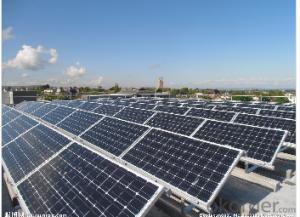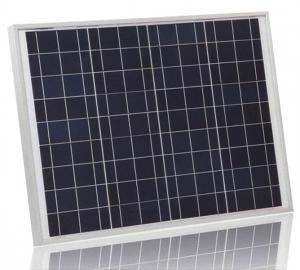Jimmy Carter Solar Panels:Small Solar Energy Products for Household
- Loading Port:
- Shanghai
- Payment Terms:
- TT OR LC
- Min Order Qty:
- 1000 watt
- Supply Capability:
- 1000000 watt/month
OKorder Service Pledge
OKorder Financial Service
You Might Also Like
Specification
Product Description
Why choosing us
1) Excellent quality, competitive price, prompts delivery, on-time service and good reputation.
2) Fast sample delivery
3) Low minimum order
4) Fast shipment in 15~20 days on receipt of your payment.
5) We handle all the components needed for utility-connected systems, or for powering independent homes and remote industrial sites.
6) We offer knowledgeable tech support before and after the sale.
7) We manufacture the complete line of solar modules ranging from 3W to 300W with CEC, TUV, and CE approval, offering the full spectrum sizes, solar panels are as efficient as other competitors, but far cheaper-without skimping on quality. 
Features
High reliability with guaranteed -3% to +5% power output tolerance, ensuring return on investment
High conversion efficiency based on leading innovative photovoltaic technologies
Withstands high wind-pressure and snow load, and extreme temperature variations
Attractive appearance
Unique frame design, high mechanical strength, and easy Installation
Efficiency
Low voltage-temperature coefficient allows higher power output at high-temperature condition
High efficient, high reliable solar cells ensure our product output stability
Materials
Advanced EVA encapsulation system with triple-layer back sheet meets the most stringent safety requirements for high-voltage operation
The sturdy, anodized aluminum frame allows the modules to be mounted on a variety of standard racking systems and to withstand harshest conditions
Ultra reliable bypass diodes prevent damage through overheating due to shaded or defective cells
Innovative, environmentally friendly packing method using pile-edges ensures modules arrive in perfect condition
We handle all the components needed for utility-connected systems, or for powering independent homes and remote industrial sites.
We offer knowledgeable tech support before and after the sale
New frame design incorporating hexagonal shaped drainage holes, with more grounding holes, provide flexible installation and use.
Quality and Safety
1. Rigorous quality control meeting the highest international standards
2.25-year power output transferable warranty
3. Have TUV, IEC, CE, ISO9001/14004 and RoHS certificates
APPLICATIONS:
1. Water pumping
2. Water purification systems
3. Remote village lighting
4. Solar home system
5. Street and camp lights
6. Traffic signals
7. Medical facilities in remote areas
8. Microwave/radio repeater stations
9. Battery charging
Construction drawing
1: Anodized Alu Frame
2: Tempered Glass
3: EVA
4: Solar cell
5: EVA
6: Backsheet
7: J-box
Warranty:
5 years product warranty
10years 90% of power output
25years 80% of power output
| Place of Origin: | Guangdong, China (Mainland) |
| Material: | monocrystalline silicon |
| Max. Power: | 240W |
| Conversion efficiency: | 18.30% |
| Module size (mm): | 992*1482*45mm |
| Cell Type | 156*156/6*9 |
| Nominal voltage(V): | 27.6 |
| Nominal current (A): | 8.7 |
| Open circuit voltage (Voc): | 33.5 |
| Short cirsuit current(Isc): | 9.39 |
| Power tolerance: | -3%to+5% |
| NOCT: | 45± 2%/degree |
| Temperature coefficient of Voc: | -0.34%/degree |
| Temperature coefficient of Isc: | 0.017%/degree |
| Temperature coefficient of Pmax: | -0.48%/degree |
| Operating temperature: | -40/degree to+85/degree |
| Certifications | ISO 9001 TUV CE RoHS |
| Maximum system voltage: | IEC, 1000V DC, 600V |
FAQ:
1.Price per watt?
It depends on the quantity, delivery date and payment terms.
2.Parameter of the module?
We have different series of panels in different output, both c-si and a-si. please take the specification sheet for your reference.
3.Can you provide the peripheral products of the solar panels, such as the battery, controller etc.?
We have two companies(CNBM International & CNBM engineering Co.) with different approaches. We can supply not only the solar module but also Solar Cells, off grid solar system, even service with on grid plant.
4.Warranty policy?
Our product performance guarantees for 25 years
• 12 years guarantee for workmanship
• Timeliness of delivery
• Quality Products certified (TÜV, UL, CE, ISO)
5.Lead time?
In 3 days after purchasing, we will arrange the factory delivery ASAP. The specific time of receiving is related to the state and position of customers. Commonly 7 to 10 working days can be served.
- Q: What maintenance is required for solar panels?
- Solar panels require minimal maintenance. Regular cleaning of the panels to remove dirt, dust, and debris is recommended to ensure optimal efficiency. Additionally, inspecting the panels for any damage or signs of wear and tear is important. It is also advisable to monitor the performance of the solar system regularly. Overall, solar panels are known for their durability and reliability, requiring little ongoing maintenance.
- Q: I am looking for an average sized solar panel (Just Panel), not 2 big n not 2 small. Any idea where i can find in abudhabigt;??
- I know where in Dubai , just go to Naif road where they sell the satellite equipment , there are a couple of shops that sell all kind of solar panels and dish equipment stuff. Sorry can't remember the name, But it is right in front of the paid parking lot (the private not public one).
- Q: What in the solar panel wares out so that the panel can not convert the suns energy to electric energy? Please post were you get answers.
- The plastic covering degrades slowly and becomes more opaque, The metal current carrying parts corrodes over time. The metal frames corrode but can be repaired. The photovoltaic cells also degrade over time from exposure to ozone and heat that builds up in the panel.
- Q: do solar panels create electricity from the ultraviolet light created from the sun? because they only have an efficientcy of like 8% and this scientist found out a way to collect the visible light also, and he says the solar panel could have an effeciency of up to 80%! so my question really is, do solar penels creat electricity from heat? do you know of anything that can?
- Not many people realise it, but Einstein did not win the Nobel Prize for either Theory of Relativity. He was awarded the prize for his work on the photoelectric effect. i.e. the ability of some materials to take photons of light and turn their energy into electricity. Now, since most of the Sun's UV rays are filtered out by the Earth's atmosphere, else we'd be able to get a sunburn in seconds walking around outside in daylight, I think there is some energy imparted to the solar cells by UV wavelengths of light, but most solar cell materials rely on the wavelengths of electromagnetic radiation we call visible. Plus, I always thought infrared wavelengths conveyed more heat energy than UV rays.
- Q: Are solar panels durable?
- Yes, solar panels are generally durable. They are designed to withstand harsh weather conditions, such as rain, snow, and wind. Additionally, they have a long lifespan, typically ranging from 25 to 30 years. However, the durability may vary depending on the quality of the panels and the installation process.
- Q: What is the average annual energy output of solar panels that can be installed on the home?
- The Sun provides about 360 W per square meter above the atmosphere (Solar Constant). Approximately 2/3 of the energy is lost in passing through the atmosphere, which means you should anticipate at best about 450 W per square meter arriving at a solar panel directly facing the Sun on a clear day. You can anticipate an efficiency of approximately 30% for a typical solar collector, or about 00 W to 40 W per square meter of solar collector being delivered as electricity under the best of conditions. These are estimates, but we need better information on the actual power delivered per square meter of a particular solar collector under the best of conditions before we can begin to estimate the amount of energy per meter squared collected over a typical year for a given location.
- Q: Can solar panels be used for street lighting?
- Yes, solar panels can be used for street lighting. By harnessing the energy from the sun, solar panels can power street lights, eliminating the need for electricity from the grid and reducing carbon emissions. Solar-powered street lighting systems are increasingly being adopted as a sustainable and cost-effective solution for illuminating streets and public spaces.
- Q: Can solar panels be installed on a streetlight?
- Yes, solar panels can be installed on a streetlight. This allows the streetlight to be powered by solar energy, reducing the reliance on traditional electricity sources and making it more sustainable.
- Q: How do solar panels impact the energy independence of a region?
- Solar panels can significantly enhance the energy independence of a region by generating clean and renewable electricity. By harnessing the power of the sun, solar panels reduce dependency on fossil fuels, which are often imported from other regions or countries. This increased reliance on solar energy can help reduce the costs associated with importing and transporting traditional energy sources, thus promoting greater energy self-sufficiency. Additionally, solar panels enable communities to generate their own electricity, reducing their reliance on centralized power grids and fostering local energy production. Overall, solar panels play a crucial role in enhancing the energy independence of a region by providing a sustainable and locally-sourced energy solution.
- Q: Solar panel for battary charging
- Are okorder / or hook up several meters and supervise the process regularly. The UPS has no role in the charging—only the discharging.
Send your message to us
Jimmy Carter Solar Panels:Small Solar Energy Products for Household
- Loading Port:
- Shanghai
- Payment Terms:
- TT OR LC
- Min Order Qty:
- 1000 watt
- Supply Capability:
- 1000000 watt/month
OKorder Service Pledge
OKorder Financial Service
Similar products
Hot products
Hot Searches
Related keywords




























